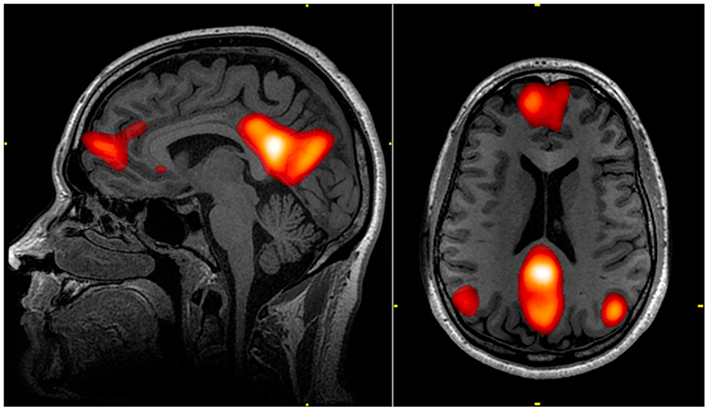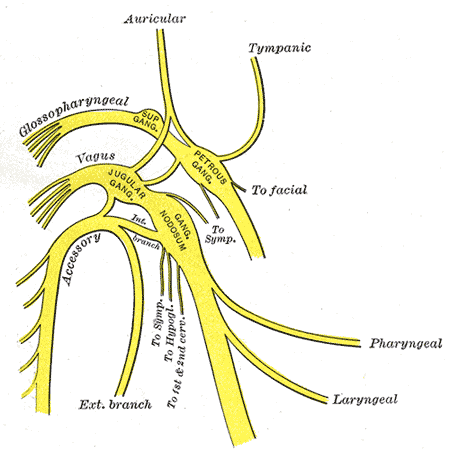Neuroscience of Meditation
Dr. Josh Stout's personal research on meditation, what science knows and what it doesn't, the mind-body connection and how we can manipulate it, and how and why a meditation practice can reduce stress and improve imagination.

Please scroll down for links below the transcript. This is lightly edited AI generated transcript and there may be errors.
Eric 0:09
Today is Thursday, May 16th. We're doing this on a Thursday. We normally do it on a Friday. How are you doing, Josh.
Dr. Josh Stout 0:16
I'm doing well. Eric I want to.
Eric 0:18
What are we talking about today?
Dr. Josh Stout 0:19
I want to talk about the neuroscience of meditation today. And I really wanted to get into a little bit of the details of the neuroscience, starting with we really don't know anything, but we have some good hints about what's going on.
Eric 0:35
So what we should we discuss the fact that we have meditated, for a while?
Dr. Josh Stout 0:40
Will get there.
Dr. Josh Stout 0:41
Yeah. So that's the other side of it is after I talk about the neuroscience, I want to get into some really heavy speculation stuff that there is absolutely no evidence for. But as a practitioner and someone who studies neuroscience, how I think things might be working.
Eric 0:59
I love that. I just thought that we should, you know, full disclosure up front.
Dr. Josh Stout 1:02
Yeah, no, we'll be get we'll be going, definitely going there.
Eric 1:04
We have been studying and practicing meditation for years.
Dr. Josh Stout 1:08
Yeah, very long time. So this is this is from a fairly knowledgeable place within the world of meditation and also a more traditional place in the world of meditation. We're in a particular style. We've been studying that, mostly that one style. I mean, there's other things out there that we've looked at, but mostly that one style and, you know, in a traditional manner so that it's not many of the, you know, guided meditations or practices like that that people do. You know, walking and listening to music is not meditation, in my opinion. But we'll we'll talk about that.
Eric 1:46
Walking and listening to music. It can be done mindfully, right?
Dr. Josh Stout 1:50
Still not meditation.
Eric 1:51
Not meditation. Yeah, but it is a practice. It can be done.
Dr. Josh Stout 1:54
Mindfulness is related to meditation, but it is not the same thing.
Eric 1:57
But it can be done in a way where you're practicing something. But it is not meditation yes.
Dr. Josh Stout 2:02
Anyway. And I can now tell you why. To a certain extent.
Eric 2:06
Ok, that’s, I’m looking forward to that. Yeah.
Dr. Josh Stout 2:07
So I have been getting more and more into just physically how the brain works, teaching class in neuroscience and understanding sort of motivational levels. Most of what I've looked at, you know, as you know from previous episodes, is dopamine, which is emotions, limbic system, sort of the the older portion of the brain and not really paying as much attention to the overall neocortex. The the folded gray matter that you normally think of as your brain, the outside portion, your prefrontal cortex, where all of your your your motivation and forethought comes from.
But meditation affects all the parts of the brain. And it definitely is something that is affecting the the neocortex particularly. And so I wanted to look at that a little bit. So this is some research I've done outside of my own research, but just for because I'm interested in how the brain works. And what I was looking at is overall what studies have actually been done on meditation. How does it look? And then I wanted to try and as I said, bring that into this world of of of metaphors and demons and snakes and dragons and that world of meditation that is is the much older sort of mythological context for meditation, but is also one that is based on empirical evidence. So you have thousands of years of empirical practice mixed up with some very flowery imagery, but yet very, very real and so I wanted to start with with some of the science and then get into some of this wilder stuff.
So, scientifically, we know it has several really useful things that are measurable. It lowers your corticosteroids, so it lowers your stress. Overall, we know it can do things like regulate heartbeat and generally slow down the anxiety of of over obsession with the negative aspects of life. These are all things that are understood as something meditation can do, but it's not all that well understood how that works.
It's very difficult to have a control group of people who are sitting there and in some way not meditating. We don't exactly have great definitions for the difference between what meditation is and what meditation isn't. And interestingly, that's true of science, but not of traditional meditation practices. And so I can say as someone who practices traditional meditation, yeah, walking along, listening music is not meditation, and science is beginning to get at to why that might be.
So you have this, this mode your brain goes into called the default mode, the default mode network or default. Yeah, but default mode network or default network, and it's made up of several regions around your brain, the parietal regions and the the sort of medial regions around the temples. Then some of the frontal regions and some of the regions and back. So it's almost your whole brain. It's technically known as the frontal medial parietal network, which is basically, again, the whole brain. So there's these little nodes throughout your brain and they connect whenever you're just sitting there doing nothing when you're not doing an active task. All of these networks connect to each other and generally form a activity that your brain is doing when you're not thinking about something. And so originally in neuroscience, we thought that your brain only activated when it needed to perform a task, but very quickly noticed that there was no changes in metabolism. Your brain doesn't actually use more energy when you're doing calculus than when you're just sitting there looking at the ceiling. It uses roughly the same energy under both circumstances, maybe ever so slightly more. When you're thinking super hard, but your brain doesn't actually heat up, even though it feels like it does, you're using roughly the same energy under any circumstance. So this default network is what your brain is doing and it is not activated in babies and develops over time till it's more or less and it's a current stage when you're about 12. And so we don't really know what's going on with this. But the idea is it seems to get activated when you are thinking about yourself, your past, doing something from your past social relationships, thinking about conversations you had at a party, that sort of thing. All of these things are going to activate the default map network. So this is what you're doing when you're sitting there just staring at the ceiling.
Eric 7:12
This is the inner monologue. You're basically saying the inner monologue activates this default network.
Dr. Josh Stout 7:19
Yes, that's what it's doing. Exactly. Yeah. So this is that inner monologue. It's your memories. It's digging up memories of your past.
Eric 7:26
When we transition from idle play as the default activity to thinking about something or what has happened to us today or earlier, that is the transition.
Dr. Josh Stout 7:41
That activates the default mode network. Exactly.
Eric 7:43
Okay. Fascinating.
Dr. Josh Stout 7:45
To the best of anyone's knowledge. So how are how are we getting all of this information? What we what we have is what's called functional MRI. And so they actually look at blood flow in the brain when you're doing particular things.
Eric 8:00
They can actually measure this while you're awake and doing things\?
Dr. Josh Stout 8:04
And doing things, Exactly. So so if you if you are hitting something with a hammer, they'll see the parts of your brain light up that indicate hitting something with a hammer. If you think hard about hitting something with a hammer, those same parts of the brain will light up. If someone describes or you describe hitting something with a hammer, some of those language areas will light up in addition to the parts that involve actually hitting something with a hammer, even if you're just thinking about it in some way or describing it or hearing it. So these are parts of the the meaning and activity of our world. So we are our brain has a meaning and it our body has the activity and we bring these things together. So they're not really different that that are active. Life is what our brain is doing so that when we were performing a task, our brain is doing a particular set of calculations related to that task. And that particular work is associated with a task even if you're not doing the task when you're sitting there staring at the ceiling, you're not doing tasks, so you're you're not doing any of those portions of your brain.
Eric 9:16
Not having to remodel the world.
Dr. Josh Stout 9:18
So those portions, well, you're not you're not having to think about particular actions. And so those portions of the brain stop. And what happens is you sit there and think about your relationship to yourself and your past and other people. And this is basically how we're forming our self. And so babies are not formed with a good self sense of self, but they develop it over time. And by the time you're, you know, more or less 12, you seem to have a pretty well defined sense of this. But this is this is again, extremely speculative, but still within the realm of science, speculative. And there's there's weird differences. Not everyone develops it the same way. People with a autism have a some portions of the default network don't turn on the same way, particularly those having to do with social relationships. People with ADHD have a default network, but it's very similar to their active network. You don't see as much of a change between them. There's there's differences between different the way different brains work with this.
Interestingly, meditation does not activate the default network. You would think it would. And this is what I mean. Just walking along thinking to yourself is not meditation.
Eric 10:44
Because you're doing something.
Dr. Josh Stout 10:47
You're not doing something and you're not activating the default network, you're doing something else. There's there is, there is there is activity based things and there's sitting there staring at ceiling based stuff. And meditation is a third thing. It's a third thing. It activates things differently so that
Eric 11:11
The plasma of the mind.
Dr. Josh Stout 11:13
Well, there's there's particular regions that are reduced below controls by meditators. So if someone's just you - someone's told you meditate right now and you've never meditated before and someone who's been meditating for, you know, 1000 hours or more and, you know, their whole life, they're going to actually reduce activity in certain portions of the brain below the people who have never had this practice. And then when they actually do an activity, it's going to go above where they were. And so it's going to it's going to actively increase.
So there's places that are if someone is experienced meditator and are just staring at the ceiling, the brain will be just like anyone else staring at the ceiling. That's not meditation. And it's interesting that in the sort of thoughts of what meditation is for is one of them is dealing with the illusion of self. And so when you're sitting there staring at the ceiling, this is when you're building it, you're building your past, you're building your self, you're building a relationship to other people's. It's when you're building this relation to yourself, when you're meditating, you're doing something else. You're not building a relationship to yourself. You're not making this illusion of self. You're doing something else.
I find that really interesting. I don't know exactly what to make of it. So this is just sort of we're just at the cusp of starting to understand the differences between what a meditating brain is and what a not meditating brain is. And so if you are sitting there every morning thinking about how you're going to plan your day while you're sitting there, you know, meditating, that's not meditating. You're you're building yourself, that's great. It's a useful part of your day. But that's not the same as meditating. If you are very carefully concentrating on your breath and you are doing, you know, some sort of exercise with your mind, at the same time you are doing meditation. Now, if you were actively thinking about climbing a ladder, I think that also would not be meditation because you'd be climbing a ladder in your mind and it would be the same thing as climbing a ladder in terms of your mental exercise.
Eric 13:35
That's interesting. Yes. No, no. None of the visualizations I have ever done meditating involved envisioning my body moving. That’s not…
Dr. Josh Stout 13:43
Right. That's a separate thing. Yeah. Yeah. And we can do that. We can imagine movements and they have their own action. Its own exercise.
Eric 13:51
Which I have done, yes, but not as meditation.
Dr. Josh Stout 13:52
Yeah, yeah, exactly. But not as meditation.
Eric 13:53
I have never actually made that connection.
Dr. Josh Stout 13:56
Yeah. So these, these, this, this is I'm starting to get I'm just beginning the speculation of why I think certain practices relate to these activities and what they might be useful for.
Well, why does meditation reduce stress? Here is one of the deeper reasons. It might reduce stress because it reduces your own sense of self. All of persecutions you wonder you've undergone, you think about your past and the people who've been mean to you. All of these things are things you sit there and stare at the ceiling. Do there things that are reduced when you're meditating, you're not doing that, you're practicing something else, and so you're not building that sense of self. And so that would go along with, you know, many Buddhist ideas of what meditation is about. And the the the, the idea of, you know, desire leads to suffering that kind of sense of the self really wanting something and then being denied, leading to suffering that you should not then experience while meditating because you're not doing that, you're doing something else. But there's also more direct physiological things that are happening when you're meditating. So I think I've mentioned it before and it's certainly a hot topic these days is the the Vagal Network. So the vagus nerve is basically controls your parasympathetic nervous system. So you have two sides of your autonomic nervous system. So you have your part of your nervous system you can control and the part of your nervous system you can't control. So you can't control your heart rate. For example, that's your autonomic nervous system, your sympathetic nervous system tends to get activated by, let's say, your adrenal glands and it starts making your heartbeat faster and everything is is activated. So that's called often fight or flight. So it's activating, sweating and fast heartbeat and fast breathing. And this is what this is what people are trying to treat when they take beta blockers. So beta blockers are blocking one of those. One of those adrenaline receptor sites, the beta site. And so their heart doesn't beat as fast and they don't breathe as hard and they don't they don't sweat as much. And so this is then used by people auditioning very often to reduce their anxiety. And the body is like that. I'm just bringing this up because beta blockers don't make you feel less anxious. They just reduce the symptoms of anxiety, the fast heart rate and the fast breathing. But people who are auditioning wouldn't do this if it was just a symptom. They actually feel less anxious when their hearts not racing. So the relationship back and forth between the mind and the body super clear. This is not some hypothetical thing. And you know, it is it is something that people understand and can go you know, they can abuse it. And I guess that's kind of abuse. It's not terrible.
Eric 16:55
Abuse is abuse. I don't know. Maybe. I don’t know.
Dr. Josh Stout 16:56
It's mind hacking, certainly.
Eric 16:59
I mean, certainly we've been told for years in all different contexts that the mind and the body are one, It's not a separate thing, but that gets to the point of cliche and, you know, Yeah, but it’s absolutely true.
Dr. Josh Stout 17:11
So physically, the two ways that the mind and body are one are the central nervous system coming from the mind through the spine and then the nerves coming out from the spine to the rest of the body. That's how the mind, the body or one.
Eric 17:23
Physically.
Dr. Josh Stout 17:23
Physically and the vagus nerve is all through your body. And it's it's it's nerve. It's the 10th cranial nerve coming out.
Eric 17:34
Like what? From your earlobes to your toes.
Dr. Josh Stout 17:36
Yeah, yeah, yeah, yeah, yeah. And it's. It's, it's. Yeah, it's why earlobes are sexy. Actually, it's the top of the ear where the vagus nerve is in its whole series of connections on top of the air. Those places where they put the acupuncture needles, that's, that's all vagus nerve. And it's intended to cause the vagal response. So the vagus nerve is governing the parasympathetic nervous system, the opposite of fight or flight. That's the rest and digest. So it slows everything down and slows your heart rate down, slows your breathing down.
Eric 18:07
And it makes me pass out sometimes when a needle goes into me.
Dr. Josh Stout 18:11
Yes. Well, if you lower your blood pressure enough and then try and stand up, you'll go right down.
Eric 18:15
I’ve passed out, lying down. So.
Dr. Josh Stout 18:17
Yeah, yeah, yeah. Well, if you lower your blood pressure enough under any circumstances, you will pass out. And so this can, you know, very rapidly lower your blood pressure in really seconds. [I have experienced it.] Yeah. Meditation is getting at that by that same sort of weird, backwards cause and effect. You can't see anything as cause and effect in the body. Everything is connected so that if I slowed down my breathing, this slows down my heart rate, which makes me feel less stressed and anxious. It's just like the beta blockers, but it's all backwards, starting with the breathing. So the only part of my parasympathetic nervous system that I can control is the breathing, and it starts controlling everything else. And so the heart rate goes down and my anxiety goes down and my digestion goes up. You know, I have to make sure I've pooped before I meditate because I'm going to be digesting really fast. Not going to work. Yeah, yeah, yeah. It, it it does exactly as, as you know, described.
Eric 19:23
I mean it seems ridiculous. But when you're terribly, terribly unhappy, forcing a smile on to your face can actually start you in a different direction, it seems ridiculous, but it's true.
Dr. Josh Stout 19:33
Yeah. So. Exactly. Yeah. The symptoms and causes are the same. You know, it's it's just a complete circle and it's very straight. [It’s a vicious circle.] Well, it's all it's a virtuous cycle, you know, if, if, if you can can get I mean and we've all known this, if you're angry someone says just take a deep breath. We all know this.
Eric 19:54
One of these things we need to learn again and again.
Dr. Josh Stout 19:56
Yeah. And so this this is a way that we can really get in touch with our own nervous system. And so I wanted to think about this in a speculative sense. People who study these things, I've got I've taken you now to about where knowledge has gotten to where where science is. There's you know. I didn’t…
Eric 20:20
This default network concept is very new to me. I’ve never heard this.
Dr. Josh Stout 20:24
Yeah, no, this is this is the hot new thing.
There is some backlash against it. I but it does seem to be a thing.
Eric 20:32
It sounds very software inspired.
Dr. Josh Stout 20:34
Yeah, it's very software inspired. And you can actually start looking at nodes within the network corresponding with other nodes and working the way nodes within a software network might work so that there is, as I mentioned, you know, some parts that are much more governing social interactions that are activating at the same time as your memory is activating, which is a separate node. There is there's aspects of timing so that you're you're thinking of events in order that's happening from your hippocampus. You know, all of all of these things are coordinating to form this sense of self through time.
Eric 21:12
And also when we see things firing in the brain, I mean, from what I've seen, you don't just see one tiny little cell. It's like a region.
Dr. Josh Stout 21:20
Yeah, that's why these are nodes. That's why these are nodes. And there's even nodes within the nodes. But this is this is sort of the overall network. But I wanted to think about the spine and the the vagus nerve as these two major conduits of communication with the central nervous system.
Eric 21:39
The vagus nerve runs through the spine.
Dr. Josh Stout 21:41
No, but the vagus nerve runs through the rest of the body out and doesn't use the spine. So these are the two separate conduits. Mm hmm. Mm hmm. There was there was a woman at Rutgers. She was a doctor of nursing who was coming up with. She was basically trying to come up with a an orgasm pill for women who'd had a spinal injury. And so they had no connection to the nerves going directly through their spine, to their brain. And so she was using a sort of dopamine cocktail with a bunch of other things, and they would directly connect to the vagus nerve. And so the vagus nerve is is also about sexuality and pleasure work. It did, but we never heard of it. My guess is it was too easy to abuse that. There was so many ways we could see it going wrong. No drug company wanted to make this thing. I mean…
Eric 22:43
I find that hard to believe, but that’s, that's very interesting that it was it was so powerful that it was turned down?
Dr. Josh Stout 22:52
Or or there might have been some other problem. But yeah, it basically it was an orgasm pill and I never saw even a mention of it. Outside of the university's publication on publications. It never left the lab, essentially, but it definitely worked. And so this was a way of stimulating the vagal vagus nerve directly. And it does seem as though this is connected to many of our feelings, our emotions. The vagus nerve is stimulating dopamine, it's affecting all of these same things. So when you have a feeling in your stomach that's the vagus nerve interacting, you know, butterflies are probably epinephrine. That's that's sympathetic nervous system. But other feelings, those are those are going to be those are going to be parasympathetic vagus nerve stuff. You know, you actually have a gut feeling about something that you literally have connections that are running between your gut and your brain. And they're very, very direct.
Eric 23:55
I have to say, again, this gets back to what, two episodes ago? Fiber.
Dr. Josh Stout 24:00
Yeah, yeah, yeah, yeah, yeah.
Eric 24:01
Fiber and what it does to your gut is you just said it connects directly to the brain.
Dr. Josh Stout 24:06
But in in meditation, we actually think about these things as energy pathways. So the spine is one energy pathway. And so when you meditate, you try and straighten your spine. There's another energy pathway that runs up the front of the body. There's obviously no second ventral spine on on humans. But the I think the analogous network is, is the vagus nerve. And it is something that people are aware of without really knowing its anatomy so much. But this is something that when you want to activate it, you'll sometimes need to look straight up at the sky. And it's described as having an iron bar down your throat so that you're you're changing things. So if you want the energy to go up your spine, you straighten the spine. If you want the energy to come up the front, you have to straighten and look straight up. And I suspect this is opening up some of the pathways of where the vagus nerve is entering into the bottom part of the brain. Again, absolute speculation, but again begins to get to some of these ideas of the two kinds of energy that we have in our body. Very often you'll see chakras or levels within the body are shown as two snakes or two dragons making a sort of cat. As this shape is there as their interweaving, I, I suspect that this is a metaphor for the spine in the vagus nerve, because the vagus nerve is weaving all over the body and we know the spine is going straight up and down. And so we get this sense of the two interacting, moving upwards, and they're moving up from the very base, which is about digestion and sex, which is exactly what the vagus nerve is interacting with. And so that is, that's considered the root chakras. And there that's where, you know, energy comes from, food and sex, you know, gets right into you straight biology at that level. And so I think those are the two dragons, those are the two serpents, the vagus nerve in the spine as they interact, are forming these separate nodes that form the chakras. The basic pattern is almost Pythagorean, if you, if you have a a cord and you, you, you, you cut it in half and you cut it in half, again, those are the nodes. And so you end up with seven chakras for the exact same reason that you have seven notes, because these are the interacting vibrations of a node. We don't actually have two strings in us making a set of nodes like that, but it's a metaphor for understanding where these places are in our body.
Eric 27:02
Well, we might have something like that going on. I mean, it's well.
Dr. Josh Stout 27:05
There are definitely places where where nerves interact and where they come together and they're malleable. And so, you know, this is this is what we do in kung fu. These are places that you can you can strike. And then cause, you know, temporary paralysis or, you know, pain.
Eric 27:25
And you can defend against things by opening and closing your fingers or moving your body into a different position.
Dr. Josh Stout 27:32
Circuits, circuits can be opened or shut even if there is no, you know, tissue connection. So if I, if I, if I, if I connect my my middle finger and my thumb, I've connected a circuit. This is something that is done in meditation and it's something that can be used physically to protect yourself. It is not a it's an empirical thing. I know I am shutting a particular gate when I touch my finger and my thumb together, and it's probably because I'm imagining some other thing connecting, but it's also just a physical motion that does it. And so these are all things that are related to opening your nervous system, the ways you sit, the ways you hold yourself, what they call the mudras. These are systems of metaphors for changing the way your brain is.
Eric 28:17
What are the mudras?
Dr. Josh Stout 28:18
Are oh, so sorry. So a hand position. So the ways you hold your hands.
Eric 28:23
So like what we would see in statues from
Dr. Josh Stout 28:27
Exactly. Yeah.
Eric 28:28
You know, from from the.
Dr. Josh Stout 28:29
Saints or the Buddhas.
Eric 28:32
When you see them holding their hand in a particular way or position. That's a mudra.
Dr. Josh Stout 28:35
That's a mudra. They have a that's not just a thing you're doing with your hands. It's not sign language. It's something you're doing. It's actually training your brain. Now, again, this is speculative, but I certainly feel it when I do it. And I can feel the difference in pain because I can resist. If I connect the connect the circuit and I can't resist if I don't connect the circuit. So I know these are real things and, you know, these are empirically based and they must be affecting my brain if I can feel it in my body like that. So I think there is a direct connection with this world of metaphors and the spine and vagus nerve interaction. And I don't think that's been studied in the way that we're only just beginning to get to what's happening in the brain with that fMRI. But I think it's a direction we can go and, you know, there is there's certain really obvious pressure points that are, you know, obvious in kung fu that are not obvious in in biology. So, you know, if you go find the spot right underneath your earlobe and behind your jaw and you press on it lightly, you will feel that it is painful. I talked to a neurosurgeon about it. It's like there's nothing there. You can just cut into it. I suspect he's really, really wrong that what you're actually near is your your inner ear. So your inner ear has these these these these loops of of nerves that tell you which way is up. And if you press on them, bad things happen.
Eric 30:14
Just putting my finger there. I felt a wave of nausea prior to you saying that.
Dr. Josh Stout 30:19
Right. And so these these are the things that cause seasickness, etc., is when your inner ear and your eyes disagree, you don't know which way is up. And so, you know, that's spot it for a neurosurgeon is nothing at all.
Eric 30:33
Nothing.
Dr. Josh Stout 30:33
And you know in in your life you can verify that it is a super important spot.
Eric 30:39
Where somebody might just poke you right there and you might just fall to the ground.
Dr. Josh Stout 30:43
Yeah. And if someone hits you in the jaw and the jaw hits that, I think, what was it, roller derby. They're like, There's a ganglion. And you hit that and ring the bell Glass jaw. Yeah. And yet you go right down. So, you know, this, this spot is is important. And because it's so closely connected to your ear with a vagus nerve is and then your central nervous system is can pick up information from it very quickly. It's a place that can essentially freeze your whole nervous system.
Eric 31:18
A surgeon will tell you there's nothing there, but signals will be sent out. That's I mean, throughout your body and yeah.
Dr. Josh Stout 31:24
I'm sure if I made my explanation of the inner ear, I'd be like, Oh yeah, that that's in there. But that wasn't what he was thinking of.
Eric 31:30
Right, right, right.
Dr. Josh Stout 31:32
You know, it's not like he doesn't know your artery.
Eric 31:34
There's no major artery, there’s no organ right here.
Dr. Josh Stout 31:35
There's nothing important right there.
Eric 31:36
Right? Yeah, Not in that.
Dr. Josh Stout 31:37
There's just this little bone that's got some nerves in it. But when you're meditating, when your eyes are shut, this is one of the reasons why, in traditional styles, you start with your eyes open so that you can actually have two senses of information for which way is up and where you are in the world was when you shut your eyes. Now you're relying only on your inner ear to know where reality is. And so this is the other aspect of meditation is the development of the of the imagination. And so it's something that you're practicing and you can make it stronger. And this is something that has been studied. People can see that concentration and ability, ability to mentally model things goes up in meditators. So you do actually build the imagination. But if you think of what the imagination is from a sort of Buddhist or Kantian point of view, the imagination is what filters all perception. We already talked about how all perception is filtered, it filters through the imagination, and then we build a world out of it. When you shut your eyes, you now are building that world inside yourself. And so this is the practice of meditation, is building structures within yourself that become real because you imagined it.
Eric 32:58
But there's still valid and important meditation done with eyes open.
Dr. Josh Stout 33:02
Absolutely. Absolutely. And it's dangerous to shut your eyes because without with with, with, with the eyes open, it's much safer. You're not going to be as inner focused and so many bad things can happen. You know, one of them might be simply you shut your eyes and now you're going back to your default network. And now you're not.
Eric 33:22
You're not doing the work.
Dr. Josh Stout 33:23
You're not actually doing the work. But other things are that you can lose track of, you know, who and where you are. There are many accounts of people leaving their bodies. I do not think this is something that actually happens, but I think the imagination is real and you really can leave your bodies body and, you know, people can get lost, bad things can happen.
Eric 33:49
You're saying there's no astral projection, but you can lose yourself.
Dr. Josh Stout 33:56
You can feel like you're not in your body because it's in your mind that you're imagining this thing and you've lost touch with what your body is. And this can be very, very dangerous. All you need to do is open your eyes and you'll be back where you are because your eyes are open and you know what and where everything is. But it's just like if you go tumbling down a waterfall and you're being pressed down by the waterfall underwater and being tumbled round and round, you might have a hard time knowing which way is up because you can't use your eyes and your your inner ear has now been spun around. You know, this happens to you if you spin around with your eyes shut. You'll also lose track of where.
Eric 34:36
I have actually had that experience in a waterfall.
Dr. Josh Stout 34:37
And where we're at can be terrifying. Yeah, this can happen during meditation where you lose track of where you are, and.
Eric 34:46
This can happen in a hot shower when you close your eyes, when the water is going,
Dr. Josh Stout 34:51
Oh, yeah. Just sort of stagger a little bit. So the eyes are very useful in maintaining, you know, your sense of who you are.
Eric 34:56
I mean, I’m at the age now, when I know that I'm going to be closing my eyes. I like put a of me against the wall so I know which way is up. I mean I Yeah. Experiencing this now as you're saying it.
Dr. Josh Stout 35:05
Yeah, yeah, yeah, yeah. So you know I had this happen to me meditating. I was, I was sitting there imagining energy going down and a crow landed directly above my head and chord. And so suddenly I thought about the crow. I imagine the energy going up, but I knew that the energy was going down. So my body flipped upside down. And I my head stayed where it was, but it was now straight up in the air, upside down. And so the crow was below me.
Eric 35:38
It's disorienting.
Dr. Josh Stout 35:39
I was completely disoriented and it was no different than, you know, having to touch the wall when you close your eyes in the shower. But it was really profound because I was just sitting there. I and this had just happened. And then I very quickly flipped back into myself. But I ended up with a, you know, terrible headache for like a week after that. So there are very real repercussions to this sort of thing. I suspect that it can both protect you and make you open to what people talk about is like demonic possession, things entering you. These are are these are psychological states. So, you know, if you are envious, say, and you're really, really envious of someone else and you sit there and you can't let go of it while you're meditating, this can then take over you because.
Eric 36:30
This is one of your demons.
Dr. Josh Stout 36:32
Yeah. So this is a demon that has taken over you and you're more susceptible to it because instead of doing what the meditation you're supposed to be doing, you're just sitting there reinforcing seeing whatever bad thing it is. You're taking that sense of self from the default network and connecting it to this bad thought that you just can't get rid of. And so all of the sort of, you know, the seven deadly sins, all of these all of these emotional things that are associated with our limbic system, our midbrain meditation should be helping to protect against because you're regulating those emotions. You're not building the self, but if you're not careful, it can make things much, much, much worse because that's all you start doing is focusing on on your emotions and you and your and your and your sense of inner self and your relationship to all of the abuses in your past. And this can be something that that meditation would make worse if you can't let go of these things. So, you know, teachings in Buddhism and you know, many other ideas of sort of letting these things go as part of the meditation really is vital.
Eric 37:47
I just I feel like I have to say on a day to day level, letting letting things go doesn't mean you just one day wake up and you've let things go. It means that that in in meditation you have this thought and you are gentle with yourself, you are patient with yourself. The thought comes. You're like, Ah, that's right, I'm having this thought. And in that moment you let it pass. That's letting it go. It's going to come back.
Dr. Josh Stout 38:08
Yeah, yeah, yeah, yeah, yeah.
Eric 38:10
Letting it go is a is a repeated practice.
Dr. Josh Stout 38:13
So Wun Fie says that meditation brings you closer to God.
Eric 38:18
Wun Fie, Wun Fie our our Kungfu teacher.
Dr. Josh Stout 38:21
I don't believe in God. So what does that mean to me?
Eric 38:24
I don't know if Wun Fie believes in God.
Dr. Josh Stout 38:27
Not the same one that other people do. So you know what? What does this mean? You know, there is there is Chinese gods that I do in my kung fu practice. You know, there's a minotaur who judges the dead. You know, that's a different kind of thing. That's I don't think I'm getting closer to that, but that could be the kind of thing that I could start meditating upon. It might be dangerous, but to have that kind of imagery in me would change the movement so that when I try and have that deity in my movement, I might actually be more fully able to flesh that out.
Eric 39:06
Well, I mean, but when you say bring that into your meditation, you're not meditating on the movement because then that's not meditation and that's.
Dr. Josh Stout 39:11
Not meditation kung.
Eric 39:12
Fu.
Dr. Josh Stout 39:13
But I might be able to feel different deities. What what these things be. That was actually one thing that was studied.
Eric 39:22
When you say feel different deities, which what you're saying is feeling the character that that deity represents. [Exactly.] The trope the character that is represented by.
Dr. Josh Stout 39:33
So commonly in Buddhism, which is also sometimes called an atheist religion because there is no deity, but there are many dieties.
Eric 39:41
And there's also a belief in reincarnation, which in my mind makes it into a religion. But anyway…
Dr. Josh Stout 39:45
Yeah, Anyway, Metempsychosis, as the Greeks would call it, the the idea of say, Guanyin or Avalokiteśvara, compassion and judgment, wisdom and compassion, judgment and mercy, these, these ideas of of, of, you know, two things that you can contemplate. You know, so in our in our kung fu, we consider the mercy as the block and the judgment is the strike.
Eric 40:16
And this is Guanyin who is also Avalokiteśvara.
Dr. Josh Stout 40:19
Exactly. Yeah. So these are these are these are things that you can understand through meditation that would be connection to, something that's outside of your self in a way. But I think there's a higher level as well. And I think that my whole experience of understanding cosmology was coming from my meditation because of strengthening my imagination and by strengthening my imagination, I actually understand the universe better because I can start imagining it. And you'd think that imagination was was moving you away. And that’s, it can. And this is why meditation can be dangerous. You can leave reality, but it can it can strengthen your relationship.
Eric 41:07
How could we do science if we couldn't imagine things?
Dr. Josh Stout 41:09
Exactly. Yeah.
Eric 41:10
We can't know what an atom is. We can't know what's happening on another planet or in another galaxy. We can imagine it from the things that we learn. That's I mean, yeah.
Dr. Josh Stout 41:21
And, you know, I think that if I talk to anyone from any religion or practice who has meditated sufficiently that we would actually be talking about similar things when we talked about what we were doing. So at that level, I don't think there's a problem. It's this it's really where doctrine gets in that I have issues with the entire religious practice goes.
Eric 41:51
There's there's there's I mean, it's like you said, I think I think you're right. You use it. You say that meditation is it's a third. It's a third thing that we do. And I have only practiced a few different types of meditation, but I've read extensively on meditation and there does seem to be this through line, I think you’re right.
Dr. Josh Stout 42:09
Yeah, right, yeah, yeah, yeah, yeah, yeah.
Dr. Josh Stout 42:12
Yeah. We're going to be talking to Jed later about his his wacky thoughts on things. But I did want to bring up the idea of how transcending doctrine really should be part of, of any practice. And that one of my favorite sects cults divisions of particular religion was a group called the Fatimids, the followers of Fatimah.
They ended up getting mostly wiped out by the British because they were very fierce fighters and the British didn't like that. But as a group they had a really interesting practice for reaching higher understanding. They were purposely really super dogmatic reading the Koran in a very literal way, emphasizing dogma, dogma, dogma, dogma, dogma. But at the same time, the teachers who had been enlightened were teaching contradictory texts and forcing their students to believe two contradictory texts as part of their dogmatic understanding and didn't work on all of them. Most of them became fanatic fighters, which is why the British wanted to wipe them out. But for the people who were enlightened, they realized they could not accept this dogma and they had to transcend the dogma. And it was through their own approach to the contradictory natures of the text itself that they realized they had to leave the text behind. And I find that really, really fascinating that, you know, one of the most dogmatic groups ever in this particular sector, this particular group at a particular time, and the, you know, early 19th century actually saw that as a as a as a vehicle to a transcendence. And I really think that this is sort of what I'm trying to talk about with the power of the imagination.
Are these metaphors of the snakes moving up the body, the dragons making the chakras, the separate circles, so that you're going from the first chakra to the seventh chakra, and then leaving the body is the eighth chakra where you're at the beginning again, just like the first note, you're back to Delaware again. You go through that through the octave, you're back to the beginning again. And it's this, this idea of, of, of coming back, but somehow transcending the circle as well. And this this is a lot of the Buddhist doctrine, you know, it’s why my other kung fu teacher my friend Ieie said his favorite letter was Q because it was it was a broken circle and that the idea of of being continuously in the circle means, you know, you're trapped without free will. Everything is always controlled. But when you broken the circle, now you can leave the world and come back to it, but at a higher level and you've, you've, you've, you've transcended and gone up to the next level. And so that, I think, is the process of what for me, meditation should be is trying to transcend many of these sort of rules and doctrines and understandings and understand it as a series of metaphors or ways of thinking that you can use to get to whatever that next level would be.
Eric 45:41
Fascinating.
Dr. Josh Stout 45:43
Well, that's where I wanted to go today.
Eric 45:45
Yeah, we went there. I love it. Yeah, I love it. It makes me want to talk about a number of different things pertaining to how this relates to our kung fu practice, but that’s for another time. Well, that was delightful Josh. Thank you.






Theme Music
Theme music by
sirobosi frawstakwa







